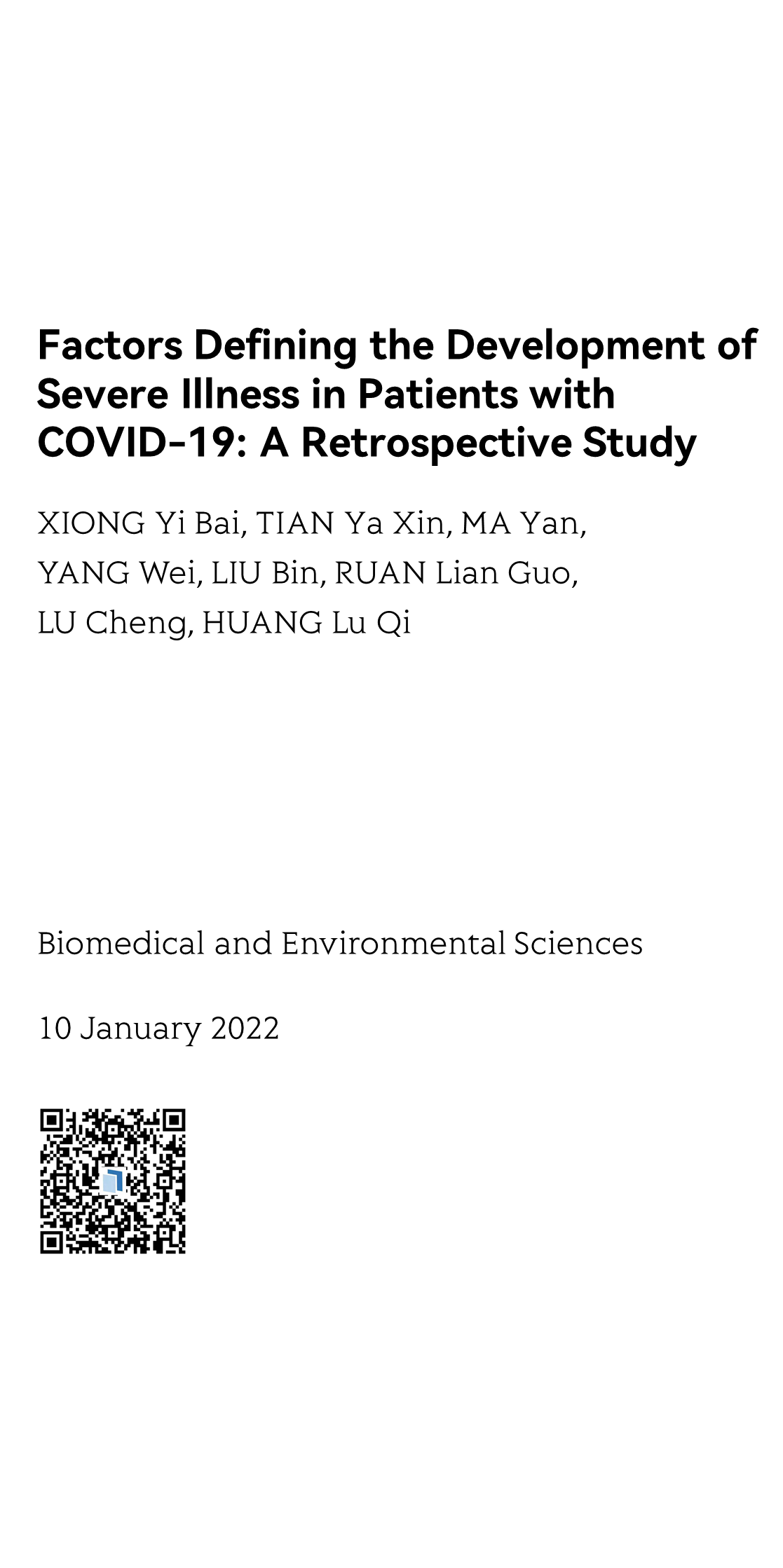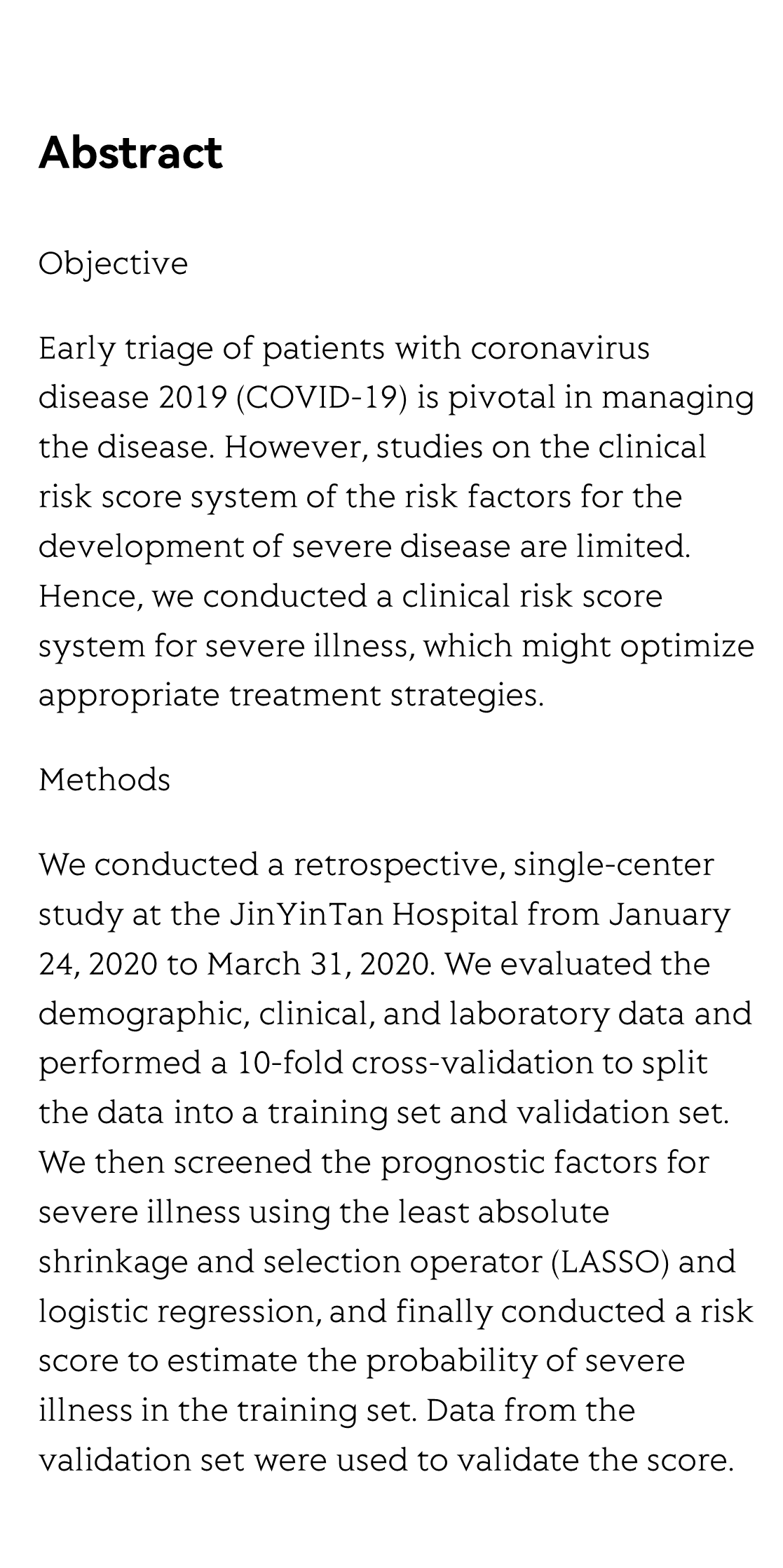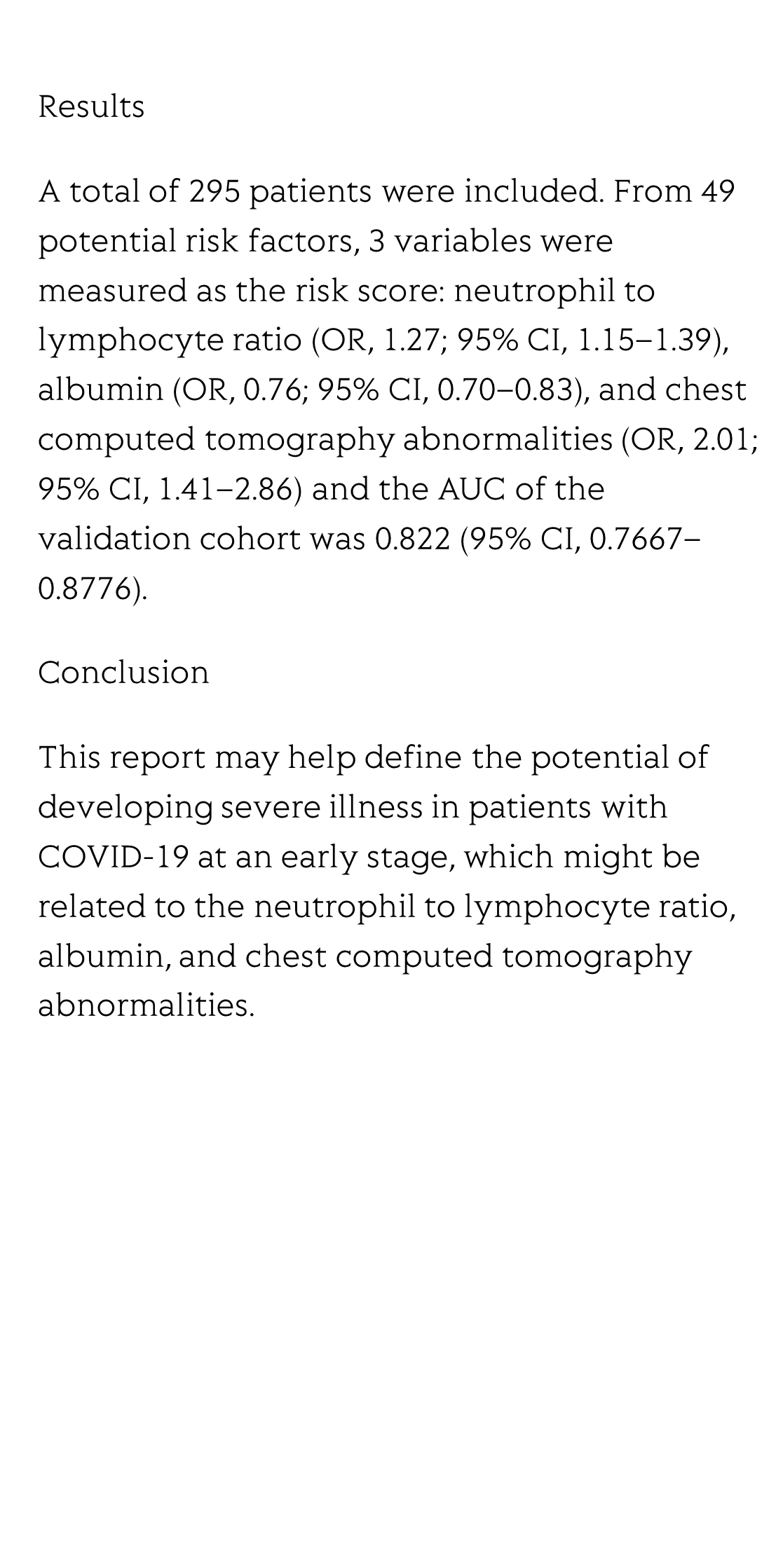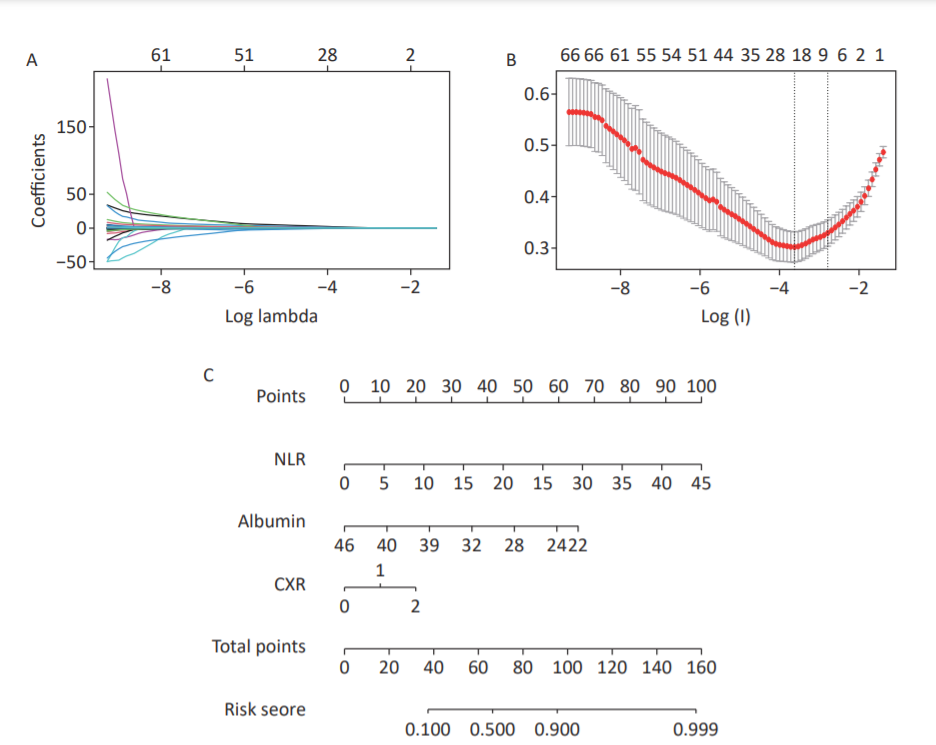(Peer-Reviewed) Factors Defining the Development of Severe Illness in Patients with COVID-19: A Retrospective Study
XIONG Yi Bai 熊一白 ¹, TIAN Ya Xin 田亚欣 ¹, MA Yan 马艳 ¹, YANG Wei 杨伟 ¹, LIU Bin 刘斌 ¹, RUAN Lian Guo 阮连国 ², LU Cheng 吕诚 ¹, HUANG Lu Qi 黄璐琦 ³
¹ Institute of Basic Research in Clinical Medicine, China Academy of Chinese Medical Sciences, Beijing 100700, China
中国 北京 中国中医科学院中医临床基础医学研究所
² Department of Infectious Diseases, JinYinTan Hospital, Wuhan 430024, Hubei, China
中国 湖北 武汉 金银潭医院感染性疾病科
³ National Resource Center for Chinese Materia Medica, China Academy of Chinese Medical Sciences, Beijing 100700, China
中国 北京 中国中医科学院中药资源中心
Objective
Early triage of patients with coronavirus disease 2019 (COVID-19) is pivotal in managing the disease. However, studies on the clinical risk score system of the risk factors for the development of severe disease are limited. Hence, we conducted a clinical risk score system for severe illness, which might optimize appropriate treatment strategies.
Methods
We conducted a retrospective, single-center study at the JinYinTan Hospital from January 24, 2020 to March 31, 2020. We evaluated the demographic, clinical, and laboratory data and performed a 10-fold cross-validation to split the data into a training set and validation set. We then screened the prognostic factors for severe illness using the least absolute shrinkage and selection operator (LASSO) and logistic regression, and finally conducted a risk score to estimate the probability of severe illness in the training set. Data from the validation set were used to validate the score.
Results
A total of 295 patients were included. From 49 potential risk factors, 3 variables were measured as the risk score: neutrophil to lymphocyte ratio (OR, 1.27; 95% CI, 1.15–1.39), albumin (OR, 0.76; 95% CI, 0.70–0.83), and chest computed tomography abnormalities (OR, 2.01; 95% CI, 1.41–2.86) and the AUC of the validation cohort was 0.822 (95% CI, 0.7667–0.8776).
Conclusion
This report may help define the potential of developing severe illness in patients with COVID-19 at an early stage, which might be related to the neutrophil to lymphocyte ratio, albumin, and chest computed tomography abnormalities.
Flicker minimization in power-saving displays enabled by measurement of difference in flexoelectric coefficients and displacement-current in positive dielectric anisotropy liquid crystals
Junho Jung, HaYoung Jung, GyuRi Choi, HanByeol Park, Sun-Mi Park, Ki-Sun Kwon, Heui-Seok Jin, Dong-Jin Lee, Hoon Jeong, JeongKi Park, Byeong Koo Kim, Seung Hee Lee, MinSu Kim
Opto-Electronic Advances
2025-09-25
Dual-frequency angular-multiplexed fringe projection profilometry with deep learning: breaking hardware limits for ultra-high-speed 3D imaging
Wenwu Chen, Yifan Liu, Shijie Feng, Wei Yin, Jiaming Qian, Yixuan Li, Hang Zhang, Maciej Trusiak, Malgorzata Kujawinska, Qian Chen, Chao Zuo
Opto-Electronic Advances
2025-09-25







